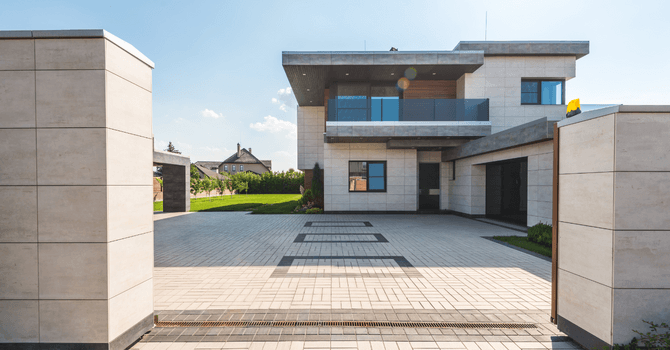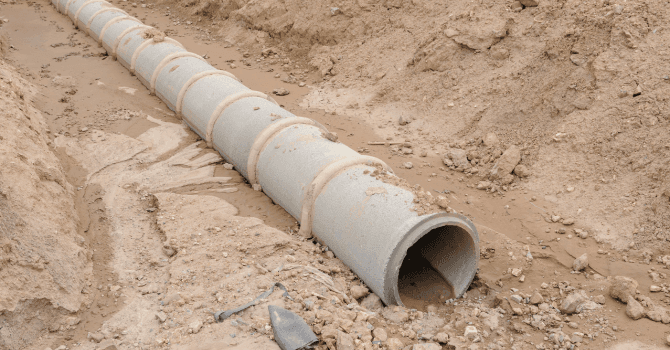Everything to Know About Building a House on Contaminated Land
By Editorial Team
Updated on November 7, 2023

Over the last few years, the issue surrounding homes built on contaminated land has been making headlines. Not only does this bring forth a lot of questions regarding the municipal administration in office at the time, but it also elicits a reflection on the repercussions of the situation in regard to citizens as well as the necessary measures needed to fix the problem.
Here’s an overview of the vital information regarding the issue at hand, both on environmental and human levels.
Building Homes on Contaminated Land: a Known Matter

Source: Canva
While buying or building a house is a dream come true for many renters, this adventure can quickly turn into a nightmare. This was, unfortunately, the case for numerous Montréal homeowners who, following several featured stories on La Facture (investigative journalism TV show), came to the realization that their houses were built on formerly contaminated land.
In fact, since 1994, the City of Montréal has known that it sits on 94 former dumpsites or quarries. Ten of those (in residential areas) released fumes, which was also a known matter by City officials.
Since the early aughts, concerned citizens have been making noise progressively in the media in their attempts at getting justice. Besides, it’s important to highlight that this issue isn’t limited to the city, it also affected Terrebonne where, in 2016, 200 residents decided to sue the City’s administration as well as the culpable contractors in the matter for 2.2 million dollars.
Determine Whether Your Home Was Built on Contaminated Land
Source; Canva
Do maps reveal relevant information?
Albeit this information was once unavailable, the City of Montréal now allows those who wish to consult maps detailing the specific location of former landfills. These documents have been public knowledge since 2016.
As of 2020, it’s also worth knowing that Montréal-based realtors must consult such maps and communicate relevant information found to any potential buyer. Note that this obligation also applies to realtors working in the Trois-Rivières area since 2018.
Although one has a tendency to commend this initiative, it appears that the OACIQ (the Authority of Real Estate Brokerage in Quebec) believes that the information regarding various landfill sites doesn’t fit the current situation on top of being vague and incomplete.
The Coderre administration (in Montréal) had, however, let us believe that all relevant information would be made available, while that was clearly not the case. In fact, the administration decided against making all documents in that regard public knowledge. Some have criticized the fact that the maps available don’t even cover the territory as a whole.
Also, to this day, only 40 of the listed quarries have clear boundaries. As for the other 54, solely an approximate location is listed.
Who’s responsible for testing the soil?
Therewithal the lack of precise and unabridged details, citizens were met with the in-office Coderre administration’s refusal to go ahead with soil testing in sectors where the exact location of contamination was still undetermined. The whole would’ve been especially useful to establish the actual occurrence of contamination in targeted zones.
Instead, a footnote found in the above-mentioned maps specifies that soil testing is a civilian’s duty, meaning it must be taken into your own hands. What’s more, some of the studies listed in the Federal Contaminated Sites Inventory were not made public and are still not made public as of today.
Thus, it's important not to limit oneself to simply consulting the maps but to take a more substantial step to assess the condition of the land and to ensure that it isn’t contaminated.
Want to learn more about soil testing? Check out our article Contaminated Soils: 3 Reasons to Soil Test.
Steps to Take
Source: Canva
Consult the directory
Due to the risks and consequences involved in building a house on contaminated land, it’s only logical to want a clear answer on the matter. Regarding the latter, it’s worth mentioning the ImmoProof website can be a useful tool since it lists all of the contaminated lands.
This directory was designed with the help of 7 different databases and includes information pertaining to the Régie du bâtiment du Québec, the City of Montréal, as well as the National Energy Board.
The site also allows potential buyers to request a property diagnostic to determine the condition of the land they're potentially buying, with data pertaining to a 150-metre radius surrounding the target property. In addition, the information provided also indicates whether there are any possible pipeline leaks in the vicinity of the potential residence.
Note that the Ministry of the Environment and the Fight Against Climate Change also has a directory, which is available here (French).
Soil Characteristics
If the information obtained via the directory makes you want to sound the alarm, it however remains advisable to initiate a more in-depth assessment. In doing so, a soil characterization should be carried out.
The whole process will first be aimed at determining whether the land in question was a former dry material landfill and a historical study of the land (often based on aerial shots taken during various time periods) will be carried out. Note that the price of such tests varies since it entirely depends on the number of samples gathered and analyzed.
If the sample analysis confirms the presence of pollutants in the soil, certain pinpointed recommendations will be given to you based on the nature of said contaminants. Note that a “sampling pattern” will be done to evaluate the extent of the problem.
Soil Rehabilitation: Two Options Available
Two options are available: in situ (on-site) or ex situ (off-site) rehabilitation. If the former is retained, chemical or organic products will be injected into the soil to then destroy the contaminants and eventually transform them into carbon gas, water, or salt. Should you proceed with an ex situ rehabilitation, the contaminated soil will have to be removed.
Want to learn more about the process of decontaminating land? Check out our article The Steps of a Land Decontamination Project.
Your land is contaminated: Does the hidden defect apply?
This is probably the question that pops into mind when a contamination problem is detected. From the get-go, note that the answer to this question isn’t a simple one.
In fact, for the issue to be recognized as a hidden defect, there has to have been no prior knowledge or hint of such a problem being reported. Therefore, if there's any mention of such an issue in the land registry or evidence of an oil tank, for example, it'll be very difficult to make your point. To prove that it’s really a hidden defect, you’ll have to meet the following criteria:
Show that the problem interferes with the use of the premises;
Prove without a doubt that having had prior knowledge, you wouldn't have bought the land, or would've at a cheaper cost;
Prove that the issue affects the value of the property;
Confirm that the contamination was unknown at the time of purchase.
Let’s wrap this up by stating that in the event that the property was sold without a legal guarantee, it’s still possible to sue the former owner. However, one has to be able to prove that the previous owner provided inaccurate or falsified information concerning the state of the land. You can also appeal on the basis of a public law limitation, although this might not be feasible in all cases.
What Are the Repercussions of Building on Contaminated Land?

Source: Canva
Obviously, it’s vital to discern the repercussions of purchasing a house on a site that doesn’t comply with environmental requirements. To bring this home, let’s start by stating that the first problem that arises in such circumstances, is i.e. land contamination.
In fact, land that formerly served as a landfill is potentially contaminated by heavy materials and hydrocarbons. To continue along to same lines, we have to mention that these contaminants will result in biogas exhausts.
Bear in mind that the above-mentioned hazards can pose serious health risks, even though they’re odourless and the presence of such can be hard to discern. Lastly, it appears that the land’s stability can be affected, which risks resulting in structural problems with the house in itself.
Aside from the repercussions, note that it can duly affect the resale value of the property, which can be disastrous, financially speaking. Also, keep in mind that this situation can, all too naturally, lead owners who’ve uncovered contaminated land to take legal action, which can be quite costly.
Is demolition the only solution?
Following the discovery of a former landfill beneath a dwelling, structural demolition isn’t always the best recourse. In fact, this decision will, essentially, rest on the nature of the contaminants found in the soil and not solely on the discovery of a former landfill on the property.
Get 3 quotes for your decontamination project
RenoQuotes.com can help you with your efforts to obtain quotes for your decontamination project. By submitting your project, we’ll put you in contact with top-rated contractors. Fill in the form on the homepage (it only takes a few minutes), and you will get estimates from trusted professionals.
Dial 1-844 828-1588 to speak with one of our customer service representatives.
Looking for something else?
Related articles
The latest industry news, interviews, technologies, and resources.

Editorial Team
•28 May 2024
Modern pavers are, without a doubt, a hit with regard to their elegant shape, most often polished finish, and beautiful shades that are both rich and refined.

Editorial Team
•07 Nov 2023
Depending on the circumstances of its installation, a French drain (or foundation drain) has a decent service life before it needs to be changed. You may be wondering if and when your drainage system needs to be replaced—check out this article for all the answers you're looking for!

Editorial Team
•08 Aug 2025
Building Information Modelling (BIM) is revolutionizing the construction industry, optimizing project design, organization, and management. Courtesy of data-rich 3D digital models, this approach enables seamless collaboration between different jobsite professionals, limiting errors and unexpected costs.

Editorial Team
•07 Nov 2023
Thinking of taking the plunge and buying a tiny house? There can be many reasons for this choice: the desire to live more simply, to spend less time on maintenance or to become a homeowner on a modest budget.

Editorial Team
•07 Nov 2023
When we discuss decor or design on the blog, we usually focus on the home front. This allows our readers to find sources of inspiration to create the perfect layout for their interiors and exteriors. But what about those looking for ideas for their business?